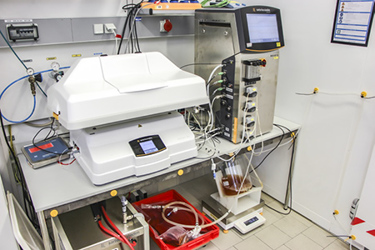Automated Cell Bleed Control In An Intensified SU Rocking Motion Bioreactor Through The SU Capacitance Sensor BioPAT ® ViaMass
By S. Grieb, J. Lemke, M. Schulze, and J. Matuszczyk

Intensified processing represents a major trend in the biopharma industry because it increases the productivity of Single-Use (SU) facilities, while decreasing the manufacturing footprint. The highest productivity is reached when a perfusion process is combined with cell bleed control to keep the cells at a constant Viable Cell Density (VCD). However, VCD is still commonly measured by manual offline methods and the cell bleed rate is adjusted accordingly. This manual control is time-consuming, error-prone and bares the risk of contamination. Here we illustrate how manual sampling and control can be avoided by using the SU inline capacitance sensor BioPAT® ViaMass in a 2 L rocking motion BIOSTAT® RM. Our data show that BioPAT® ViaMass reliably and robustly controls the cell bleed over the entire process even when process deviations occur. The yield obtained through this process is tripled when compared to a conventional fed-batch process. We conclude that the implementation of inline capacitance in intensified processes allows for a fully automated, continuous control of cell bleed. The inline sensor further provides timely information on the status of the cell culture, which increases process robustness and prevents faulty batches. In summary, using online capacitance for VCD monitoring and control ensures consistent product quality while reducing the costs of goods.
Get unlimited access to:
Enter your credentials below to log in. Not yet a member of Bioprocess Online? Subscribe today.
